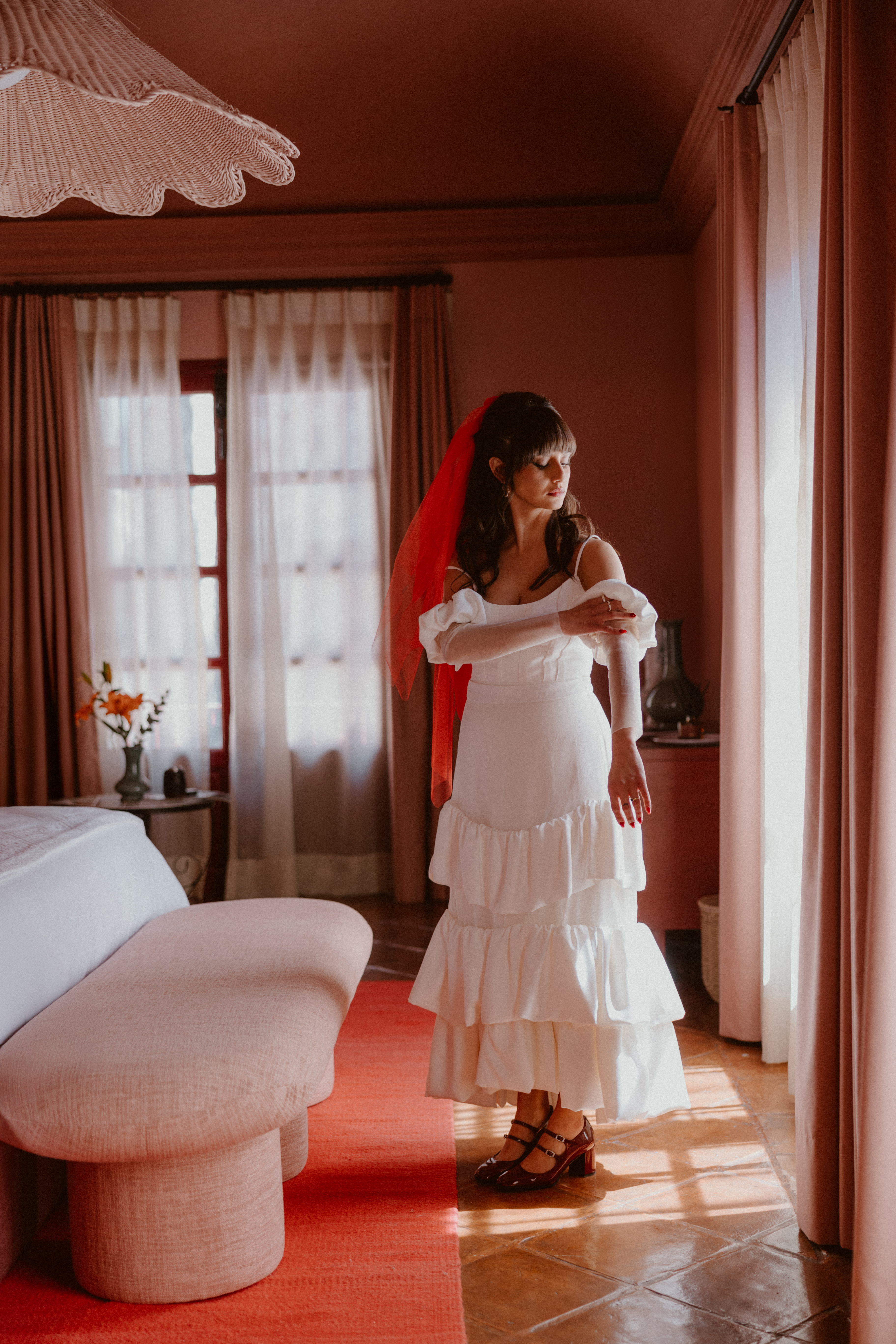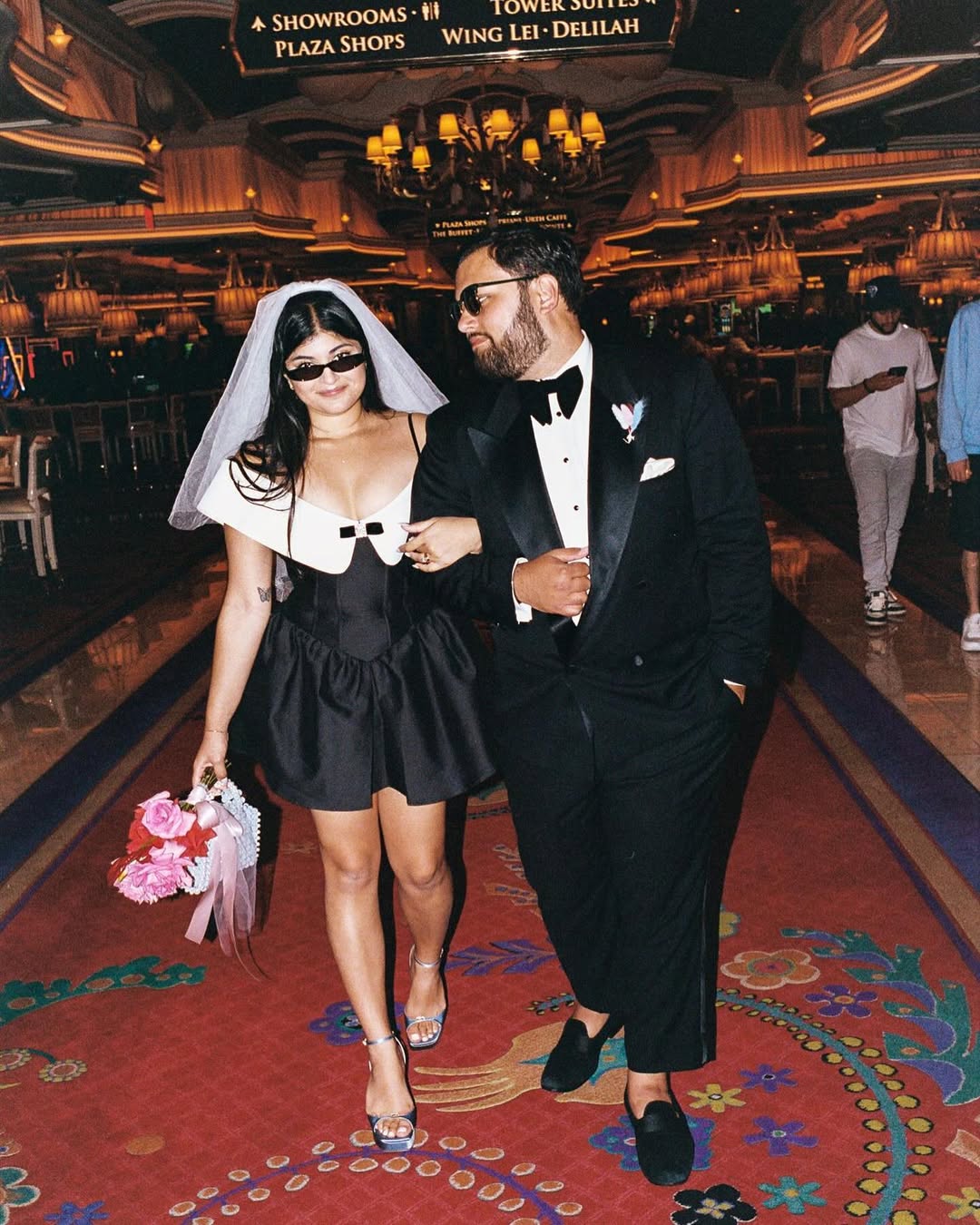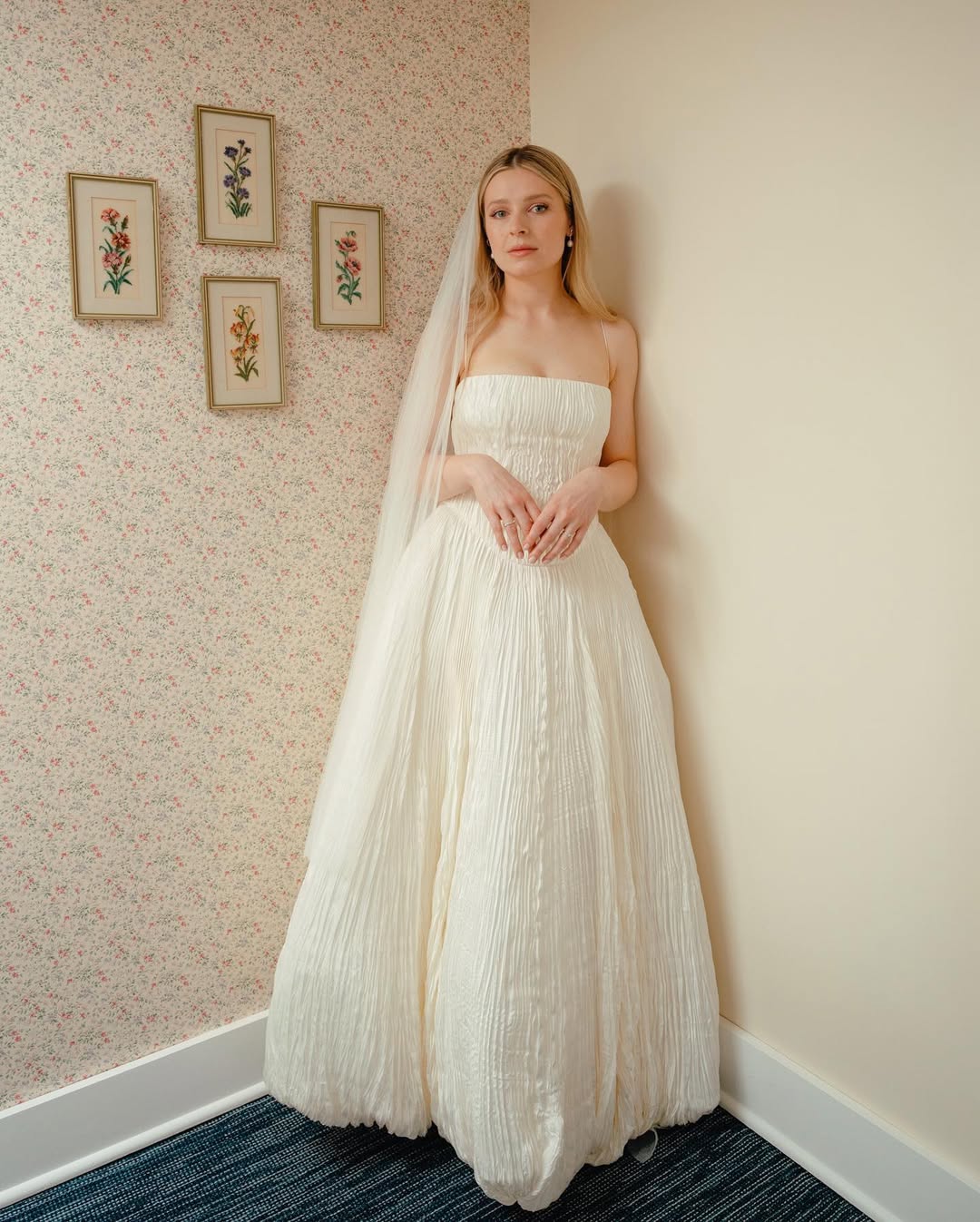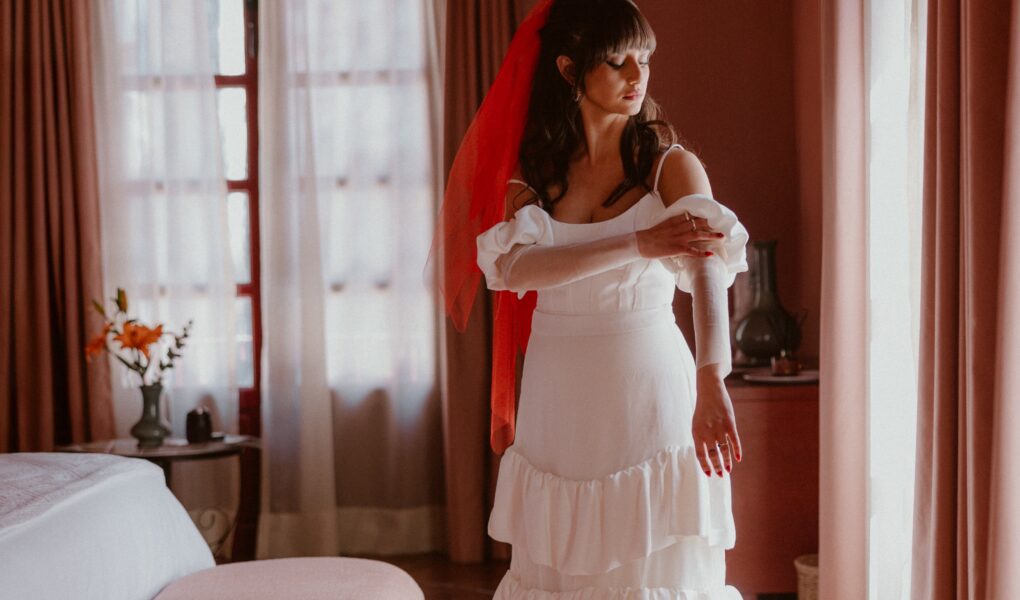Views: 88
Growing up with common-law parents, the most important dress of my mom’s life was a mere fantasy. Wedding photos weren’t plastered around our house, and if TLC’s Say Yes to the Dress was on TV, I turned the channel. I never dreamt of floating down the aisle boasting bridalwear’s mainstays of big ball gowns, lace trains and tulle veils. Recently, while in conversation with some of my girlfriends, I’ve found we share a similar sentiment. It doesn’t come from a place of bitterness, but more so a lack of appeal—and we’re not the only ones. Today, many brides are ditching tradition for unconventional silhouettes and designs (see: custom wedding dresses with micro-mini hems, black gowns and gigantic bows). It started in 2019 when it-girl Zoë Kravitz sported a crochet pearl cocktail dress from budding bridal designer Danielle Frankel. A year later, singer Lily Allen tied the knot in a Dior mini dress. For the past three years, Montreal retailer SSENSE has cemented anti-bridalwear as a bona fide trend, with its diverse collections of runway radicals like Sandy Liang, Simone Rocha and SHUSHU/TONG—including April’s Bridal 3.0 capsule. But why are brides ditching grandiose gowns for cool-girl frocks? Well, the answer is layered. In a world that increasingly celebrates diversity and self-expression, the idea of elevating traditional bridal was not accessible a decade ago. Thanks to social media, future brides are exposed to budding brands, unique points of view and a world of inspiration beyond the traditional white dress—encouraging them to embrace a more personalized approach to bridalwear. [instagram-oembed url=”https://www.instagram.com/p/DIwte5TyGAB/?utm_source=ig_web_copy_link&igsh=MzRlODBiNWFlZA==” /] Toronto bridal shop Loversland has taken note. From bubble hems and reimaged lace to corsets and basque waists, the shop carries emerging labels like Prea James and Former Girlfriend. “We believe the new tradition is about making your own rules. Bridal looks that go against the grain of years past and push our notions of what a bride should look like,” share co-founders Yvonne Reidy and Danielle Gulic. “When we opened 11 years ago, brides were a bit reluctant to dispel tradition,” they say. “Today’s brides are unapologetically leaning into looks that speak to their individuality, personal values and fearless sense of style.”

Photography courtesy of Maye Ruiz
Echoing the sentiment of personal expression over convention is Enrique and Boni Soto, founders of boutique bridalwear label SOTO. Based between Toronto and Mexico City, the duo boasts rich, natural fabrics and modular details like detachable sleeves and flowing capes. “Combined with influences of our Latin heritage, our designs infuse a distinct sense of passion,” the duo says. “The non-traditional isn’t a filter or a focus on what we do, it’s just an expression of how we see our brand and what we have to offer.” In the spirit of being an anti-bride, the choice can be an exploration of gendered styles. These days, a singular vision of being dolled up on your wedding day is non-existent. For many, opting for nuanced looks featuring suits or two-piece sets precedes hyper-feminine dresses. A well-tailored garment exudes modern comfort and confidence on the big day. What’s more, fusing masculine and feminine dressing can lean into the wavering nature of non-traditional attire.

Photography by Ryanne Hollies
For example, recent bride Zarmina Shafton wore a bridal tuxedo mini dress from SHUSHU/TONG to her elopement in Las Vegas. “I love mixing feminine and masculine elements in my style. Since nothing else about our wedding was traditional, I wanted to lean into that and have fun with my dress,” shares Shafton. Comprised of an off-the-shoulder corset, an A-line skirt and adorned with a dainty crystallized bow, the dress is a masterclass in fashion fluidity. This shift to non-traditional bridalwear is more than a fashion statement. It represents a larger movement to challenge existing traditional marriage structures. With classic cathedrals being replaced by kitschy chapels, constricting ball gowns no longer fit the bill. It’s not enough to float down the aisle—if there even is one. Brides are prioritizing practical dresses—ones they can wear more than once, allow them to move about freely and be comfortable.

Photography by Erin Leydon
“I’ve never worn something with such intricate, clever construction,” bride Abby Chornous says of her silk pleated Danielle Frankel gown. As she got married at her family’s farmhouse in Ellicottville, NY, being able to frolic around nostalgic stomping grounds easily was key. “The skirt bobbed and swayed with every step, which made it so much fun to wear.” Now more than ever, there are no rules for brides, thanks to the growing list of bridalwear brands. Call it a rise of neo-traditional trends, but society’s longstanding beliefs about what a wedding should look like are evolving. Anti-bridalwear celebrates a sartorial creativity where craftsmanship is key. It’s couture yet cool—a word that’s rarely associated with wedding culture. “We strive to evoke old world romance and new world rebellion with silhouettes that make space for brides to bring their personalities to the forefront,” shares the Sotos. “Not some traditional image of what a bride should look like.” Talk about something worth saying “I do,” for! Continue Reading


